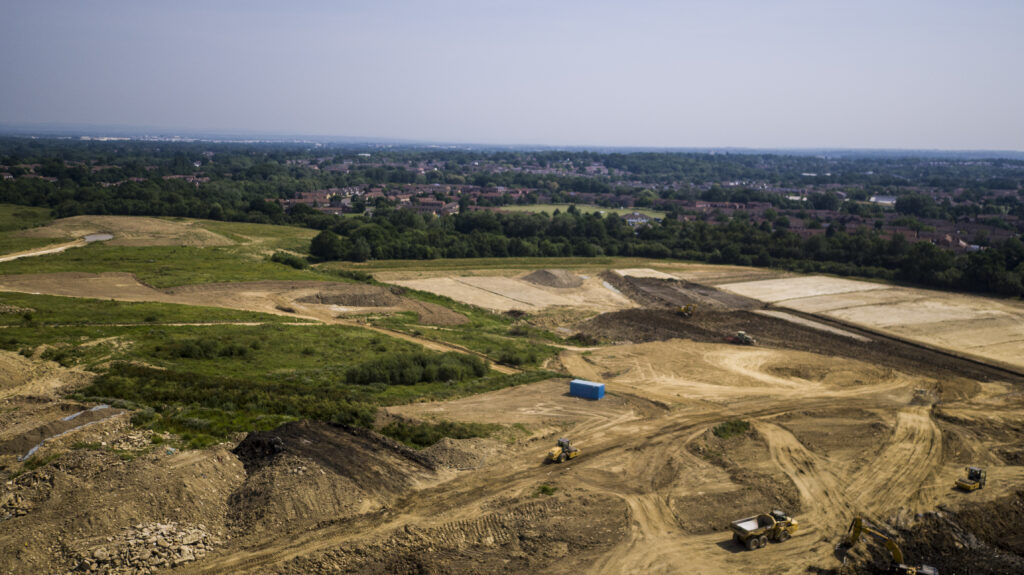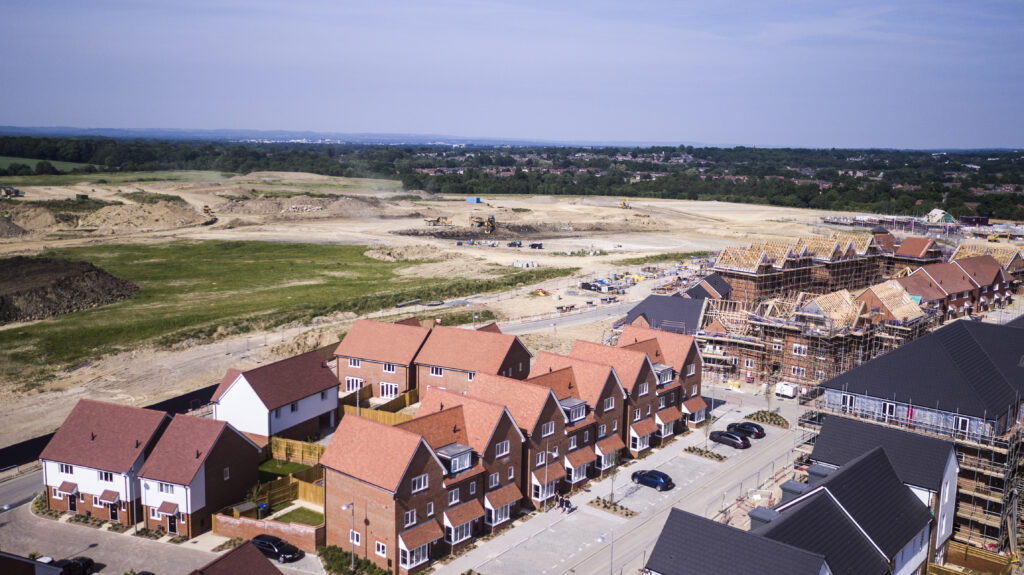Continuing our series on Sustainability in the build environment, Associate Samantha Broughton from our Land Quality team shares her thoughts on the benefits of re-use of soils, and our recent experience of this with the award-winning Kilnwood Vale development.
The re-use of soils on development sites, excavated during groundworks and construction, can bring significant financial and environmental benefits to a project. As well as the cost savings associated with not sending waste to landfill, the reduction in associated environmental impacts can be significant. Vehicle movements and the resultant emissions are reduced, and as well as lower development, transport, and landfill disposal costs, the importation of other materials, including natural resources, may not be necessary.
The use of Materials Management Plans (MMP) under the CL:AIRE Definition of Waste Code of Practice (DoWCoP) is one such route by which soils can be re-used on site, providing they meet certain requirements. It enables the re-use of both contaminated and uncontaminated materials on their site of origin or within defined cluster projects. It also provides a means for the direct transfer of clean, naturally occurring materials between sites, that would otherwise be excavated and disposed of. The DoWCoP may provide an alternative to exemptions, which can be restrictive, or the use of permits, which may take time to approve and can be costly.
Regardless of the route chosen for soils re-use, by considering this as part of a project, the development potential on brownfield sites can be unlocked, particularly on land that may otherwise remain untouched. This in turn encourages the preservation of greenfield land, as well as creating areas for communities to develop.
CampbellReith has been involved in the sustainable remediation at Kilnwood Vale, a mixed-use development led by Crest Nicholson. This is one such example where the re-use of material, alongside robust environmental risk assessments, enabled a site that was considered previously undevelopable to be brought into use as residential units, a primary school, retail and employment space, community facilities and green spaces.

This site, which included 60 Ha of historic landfill, was blighted by several issues, including land instability, high ground gas risk and irregular topography. The viability of the remediation was incumbent upon the re-use of appropriately treated excavated materials in a way to address ground gas risk, soil contamination, ground settlement and civil engineering challenges. More than 99% of the excavated soils were re-used onsite with off-site material movements limited to recycling of metals and disposal of unacceptable material that could not be recycled (including asbestos).

This achievement was recognised with the 2024 Brownfield Award for Best Sustainable Brownfield / Urban Regeneration / Infrastructure Scheme.